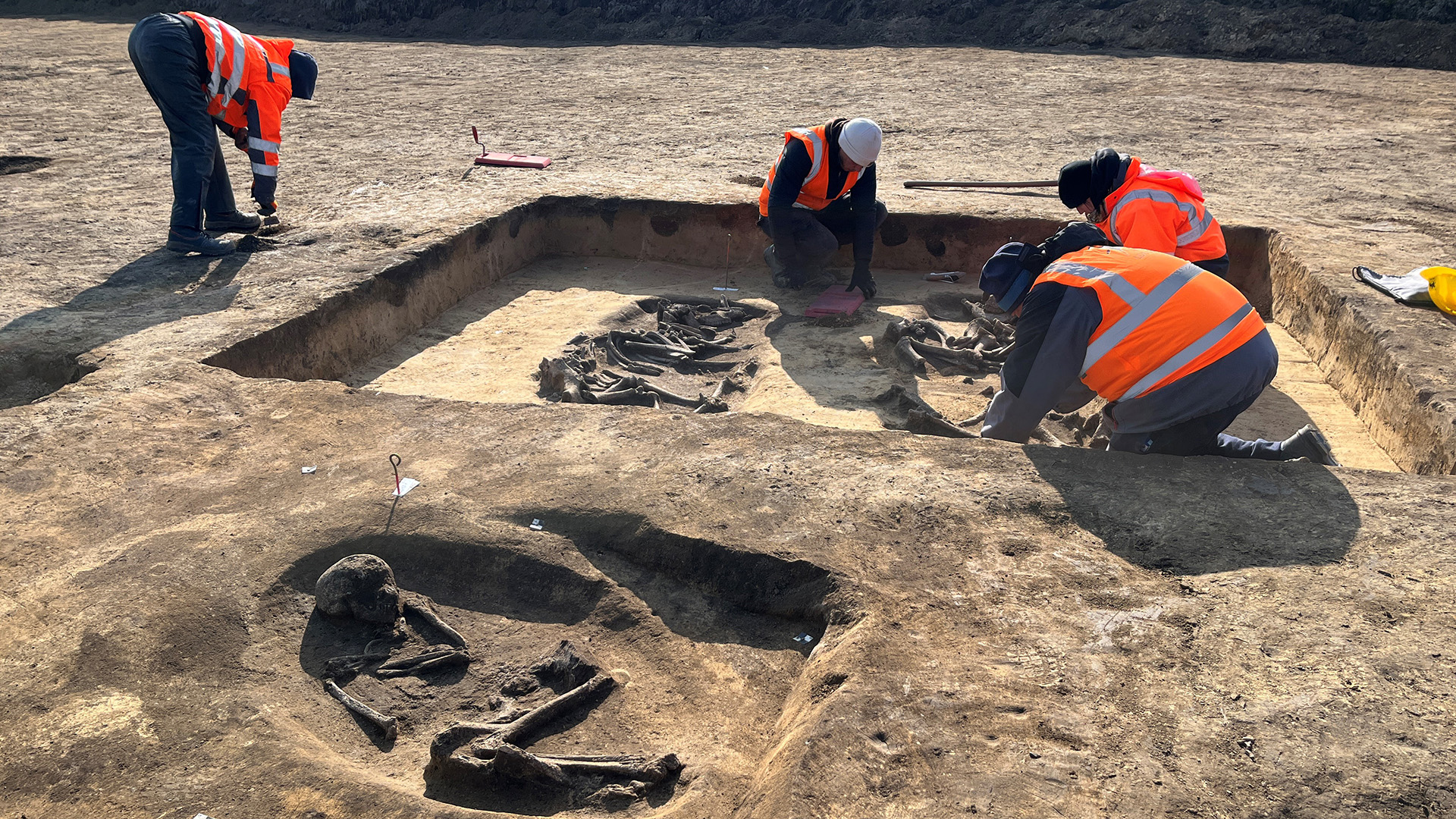
More digging to come before the heavy machinery rolls in.
Right now, Intel’s Magdeburg mega-fab in Germany is little more than a field with a few holes in it. Though those holes are of significant historical importance. Within them, archaeologists from the State Office for Heritage Management and Archaeology Saxony-Anhalt have discovered the remains of multiple burial mounds, including a chariot burial, which date back to the Neolithic period.
The burial sites discovered at the site are believed to be around 6,000 years old.
“Two approximately 6,000-year-old monumental mounds that covered wooden grave chambers, each containing several burials, were located 200 m away from each other,” Dr. Oliver Dietrich said of the findings (via CBS News). “The landscape obviously remained important for prehistoric people over a long period of time. Around 1000 years later, the corridor in between the mounds was used as a processional route where cattle were sacrificed and people buried.”
Archaeologists have been looking into the site just outside of Magdeburg, Germany since 2023. It’s where Intel plans to build its biggest European facility, what it calls the “Silicon Junction”—a semiconductor plant that’ll pump out some of the world’s most advanced chips once completed. The site has a ways to go before the first CPUs made on-site get shipped off for packaging, however, as archaeologists’ trowels break ground ahead of Intel’s construction equipment.
“The 300 hectare large industrial park also partially includes a small hill, known as Eulenberg. Although not particularly high, it divides the otherwise relatively low-relief Börde landscape, whose fertile loess and black earth soils were an important factor for settlement already during the early Neolithic period. The area currently examined turned out to be a highly complex, long-used burial and ritual landscape.”
The State Office for Heritage Management and Archaeology Saxony-Anhalt hasn’t said what will happen to the burial sites affected, but it seems likely they will be moved to safety in the coming months.
(Image credit: Oliver Dietrich, State Office for Heritage Management and Archeology Saxony-Anhalt)
The archaeologists will remain at the site until April this year. A few months later Intel will move in. These sorts of cutting-edge fabs require deep foundations with tough metal exterior walls, which will mean digging deep into the earth. The newest generation of lithographic machines are extremely large and heavy, and building a shell to accommodate that takes serious machinery. When I was at Intel’s Fab 38 in Israel—or the construction site that will become Fab 38—I saw the second largest crane in the world getting ready to shift the metal girders that would circumvent the facility. Intel would’ve hired the biggest, I was told, but that was busy building a nuclear reactor in the UK.
You’d be surprised how swiftly a multi-billion dollar fab site can spring out of next-to-nothing. Check out the comparison images above I’ve snapped from Google Earth of TSMC’s upcoming fab, Fab 21, in Arizona. From dusty field to massive facility in the span of a couple of years. This particular fab is expected to be up-and-running by 2024. Browse the interactive map below for more information on fab sites worldwide.
Intel’s first two Magdeburg fabs (the site will begin as two fabs with room for further, if required) won’t come online until at least late 2027. That will line them up with Intel’s 14A and 10A processes and newer nodes beyond that.




